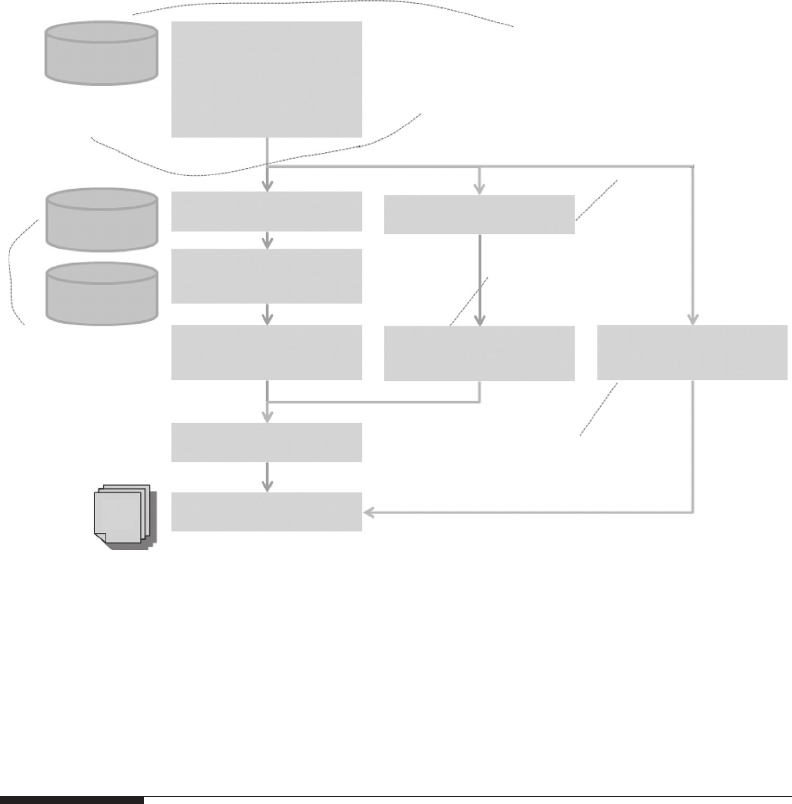
311
20
Experience Rating for Non-Proportional Reinsurance
The objective of this section is to show how we can adapt the risk-costing process that we
developed in the previous chapters for the purpose of pricing non-proportional reinsur-
ance. Note that proportional reinsurance, because it just cedes a proportional amount of
each risk to the reinsurer, will not be signicantly different from direct insurance and
therefore does not require a separate treatment.
Non-proportional reinsurance pricing has some peculiarities we need to cater to. For
example,
i. The policy basis may be ‘losses occurring during’ (LOD; not different from
the standard occurrence policy of direct insurance), ‘claims made’ (as in direct
insurance) and ‘risk attaching during’ (RAD; which has no equivalent in direct
insurance)
ii. Only losses above a certain agreed threshold, called the reporting threshold (e.g.
£500,000) will be reported to the reinsurer for the reinsurer to price layers well
above that threshold (e.g. £3M xs £2M). This is sometimes also true for commercial
insurance, but the threshold is much lower and less of a concern for the analysis
iii. Specic exposure alignments and adjustments are needed to take into account the
difference between ‘written premium’ and ‘earned premium’ and also to take into
account rate changes of the original direct policy
iv. It is more common in reinsurance to receive information on the historical develop-
ment of each claim
v. The presence of the indexation clause leads to the need to consider the settlement
pattern (London Market clause) and the payment pattern (continental clause) to
estimate the effect of the changes in layer denition
vi. The presence of long payment delays for large liability losses also leads to the need
to consider the payment pattern to set premiums that take investment income into
account (as is also the case for direct insurance but to a lesser degree)
Let us look at each of these peculiarities in the context of the risk-costing process, and
see how they lead to redening the risk-costing process as in Figure 20.1.

312 Pricing in General Insurance
20.1 Types of Contract
As we have seen in Section 3.3, there are several types of contract in reinsurance, depend-
ing on which losses are covered by the policy. As a reminder, the most widely used types
of contract are
• LOD, which covers all losses occurring during the specied period, regardless of
the original policy’s inception date and of the loss reporting date
• RAD, which covers all losses attaching to policies that have incepted during a
specied period, regardless of occurrence and reporting date
• ‘Claims made’, which covers all losses reported to the reinsured during the reinsur-
ance policy period, regardless of the original policy’s inception date and the loss
occurrence date
Only individual losses above an agreed reporting
threshold are normally provided.
Loss inflation is normally higher than for ground-up losses.
e historical development of all claims is
often part of the reinsurance submission
for certain classes of risk (e.g. liability).
A threshold distiribution such as a
Pareto, and exponential or a generalised
Pareto distribution is normally used.
If an index clause is in place,
losses to a layer of reinsurance
depend on the timing of payment or
settlement as well as on the loss amount.
Ex
posure must be on an
earned, wri
tten or
re
porting basis depending
on whether the p
olicy is
LOD
, RAD or claims made.
Orig
inal premium is often
used as e
xposure and
ne
eds to be on-levelled
based on pr
emium rate
change.
Assumptions on
– Loss inflation
– Currency conversion
Individual
loss data
Exposure
data
Portfolio/market
information
Inputs to frequency/severity analysis
Frequency model
Gross aggregate loss model
Ceded/retained
aggregate loss model
Severity model
Payment/settlement model
Cover
data
Data preparation
Adjust historical claim
counts for IBNR
Adjust for
exposure/profile
changes
Select frequency
distribution and
calibrate parameters
Select severity
distribution and
calibrate parameters
Select and calibrate
payment/settlement
distribution
Adjust loss amounts for
IBNER
– Data checking and cleansing
– Data transformation
– Revaluation and currency
conversion
– Data summarisation
– Simple statistics
Estimate gross
aggregate distribution
Allocate losses between
reinsurer and reinsured
Reinsurance Experience Rating – How It Differs from the Standard Risk-Costing Process
FIGURE 20.1
The revised risk-costing (sub)process for reinsurance pricing. The main difference with the process of Figure 6.1
is the presence of a third branch for the creation of a payment/settlement pattern model, which is used to deal
with the index clause when this features in the reinsurance contract (as is normally the case in treaty reinsur-
ance for liability classes). However, the process needs to be tweaked almost everywhere to accommodate the
idiosyncrasies of reinsurance pricing.
Get Pricing in General Insurance now with the O’Reilly learning platform.
O’Reilly members experience books, live events, courses curated by job role, and more from O’Reilly and nearly 200 top publishers.

